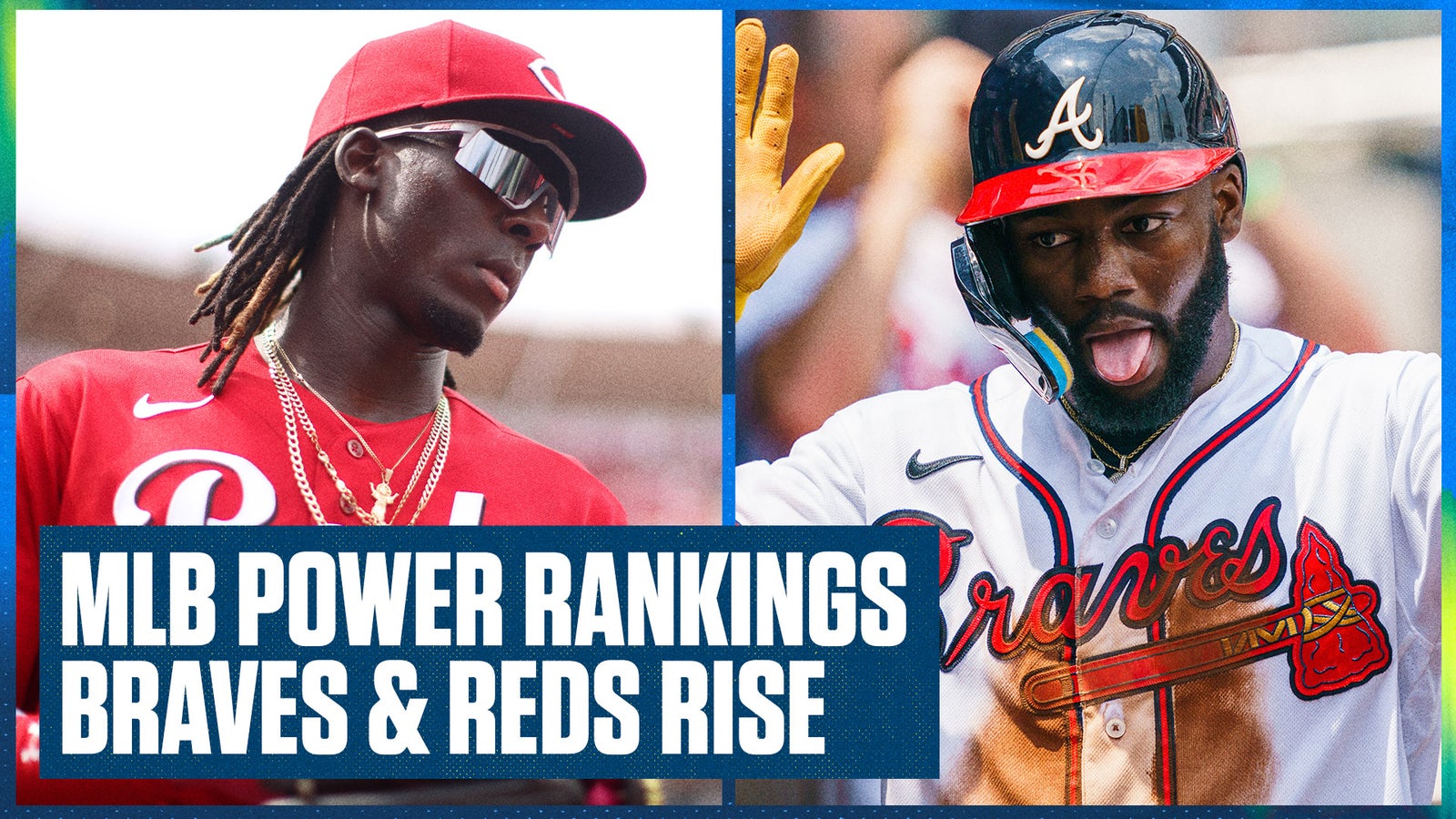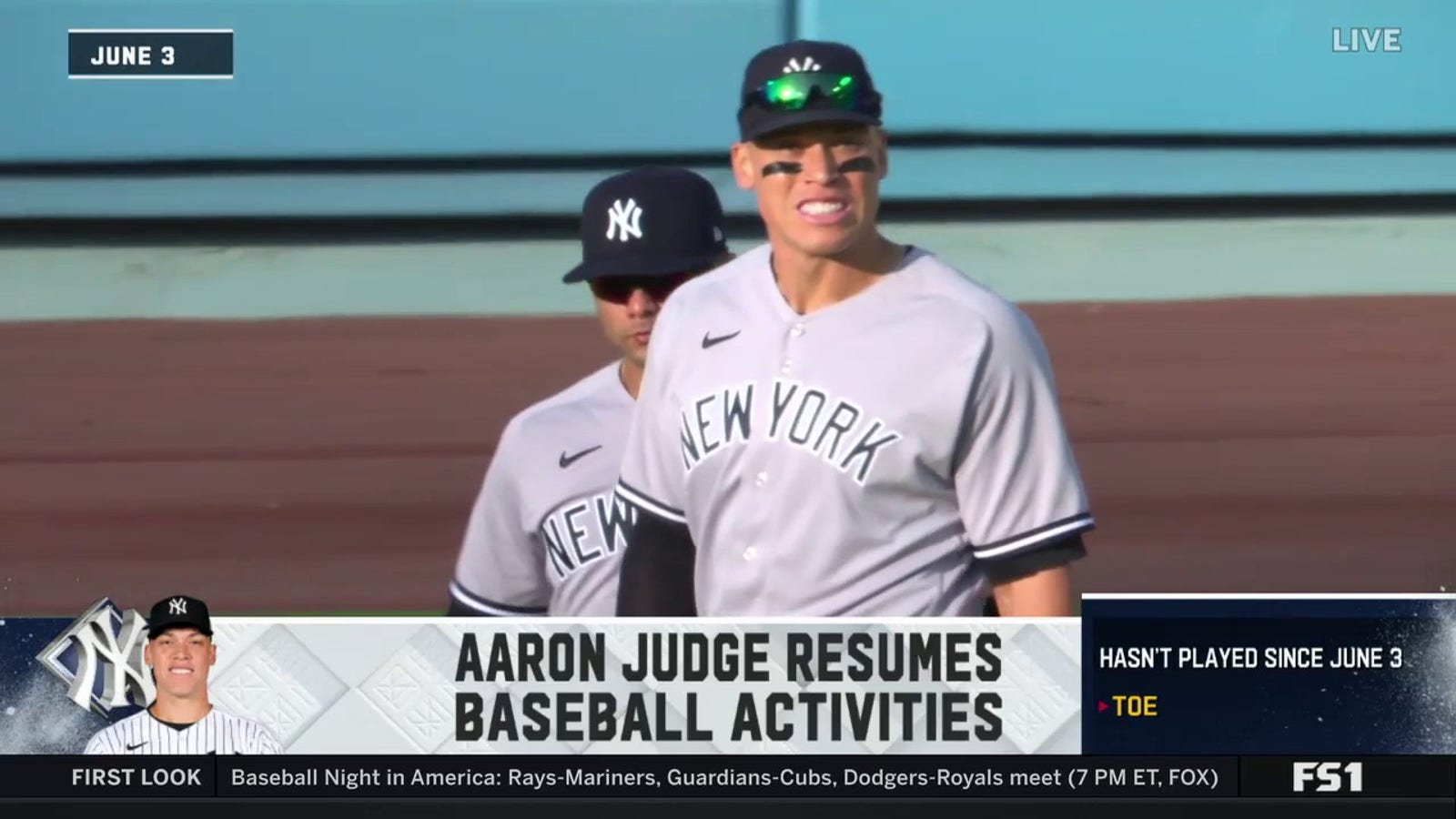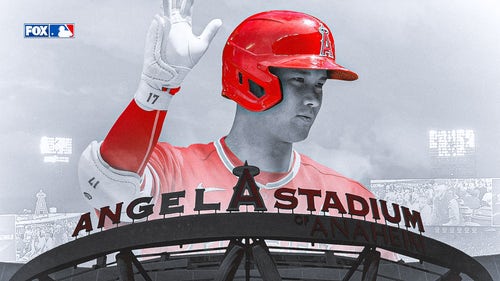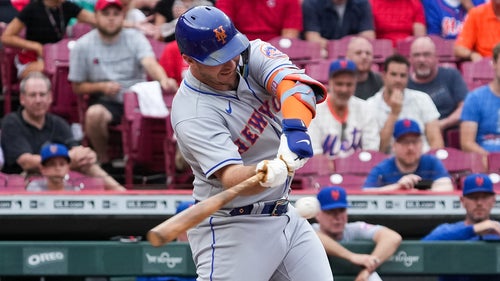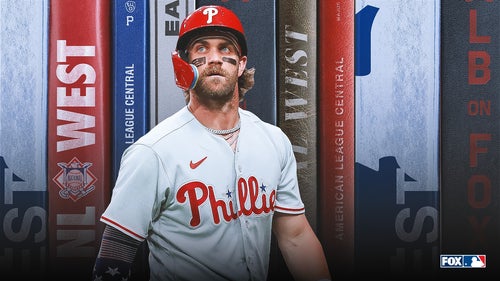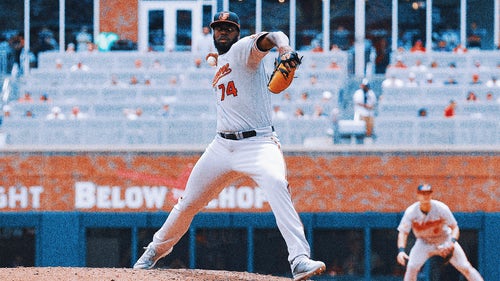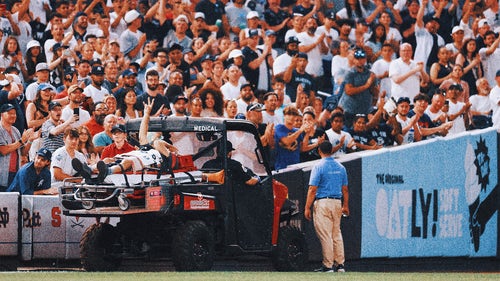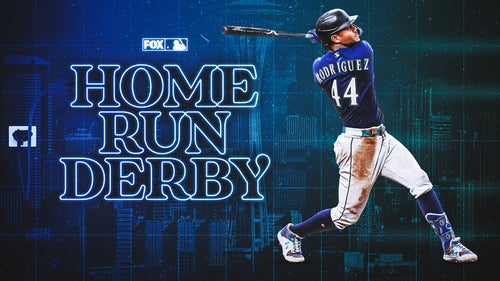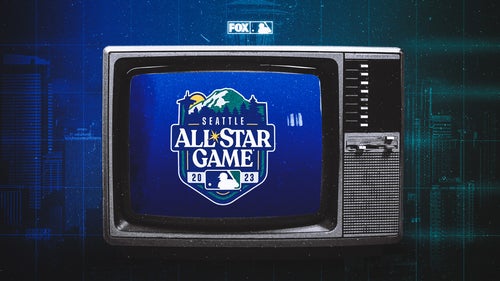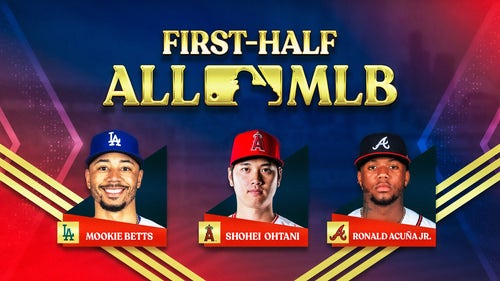As the start of the 2023 MLB Draft nears, intrigue and mystery continue to shroud the very top and the messy middle of the first round. Just as the Pirates did with the top pick two years ago when no one knew they were taking Henry Davis until mere minutes before Commissioner Rob Manfred announced his name, Pittsburgh has done an excellent job holding its cards close once again.
With the generational talent atop this year’s class — and the raging debate over which player is most worthy of the top selection — the Buccos’ top pick this year has gotten far more attention and speculation.
It’s possible there’s more clear intel that leaks out by Sunday, but for now — with just 48 hours to go — it’s still tough to gauge which direction the Pirates are leaning. There is a very good chance we are heading toward the exact opposite of what we just saw in the NBA Draft when everyone knew Victor Wembanyama was going first overall literal years before he heard his name called. And that’s great! It should make for great theater, and an awfully fun night to watch unfold in Seattle.
Sunday will feature the first 70 of 614 total picks: the first two rounds, plus two competitive balance rounds and a handful of free-agent compensation picks. The remaining 544 picks will take place over the following two days, with rounds 3-10 rolling on Monday, and rounds 11-20 rounding out the draft on Tuesday.
A little over a week ago, I released my first mock draft with my best educated guesses on how the first 39 picks could shake out, as well as some background on every club’s recent draft tendencies and what kinds of players they are most likely to target this time around. This mock will be more to the point, with my final — but hardly certain — answers for which prospects will end up with each team.
With all that said, here’s my final attempt at forecasting the first 39 of those 70. If I can get even a half-dozen of these correct, I’ll be overjoyed. This is an exercise in futility — and that’s what makes it so much fun. You can’t predict baseball on the field, and you most certainly cannot predict its draft. Let’s try anyway.
Here we go! (Top 30 prospect ranking in parentheses)
ROUND 1
1. Pittsburgh Pirates — RHP Paul Skenes; LSU (No. 2)
For much of this season, I viewed Dylan Crews in a similar light to Adley Rutschman in the 2019 draft, in that he was clearly the best player available and the Pirates shouldn’t overcomplicate things, regardless of what kind of signing bonus it would take. No matter the persistent rumors of Pittsburgh being inclined to pursue an under-slot deal at the top — just as there were with Baltimore in 2019 — I felt strongly enough that Crews was the obvious selection.
However, unlike in 2019 with Rutschman, this year brought two worthy challengers to Crews’ throne atop the class in both his teammate Paul Skenes and Florida outfielder Wyatt Langford. Crews didn’t disappoint this season by any means, but these other candidates made their cases loudly and clearly.
As I alluded to in my initial mock, I still believe if the Pirates really want to run the same under-slot playbook that they did in 2021 with Davis, Langford feels like the more sensible selection. Consider him a cost-efficient alternative to Crews, though the latter offers higher upside and a safer path to stardom than any pitcher, including Skenes. I think this strategy is arguably even more logical this year with such a ridiculously deep crop of high-school talent worth targeting for over-slot deals at pick Nos. 42 and 67.
There are no wrong answers here, and I wouldn’t blame the Pirates for playing it straight and giving Crews all the money he wants — he’s my top-ranked player for a reason. That said, I think Skenes’ upside on the mound is worth the risk, and he should still offer enough bonus savings relative to Crews to enable some creativity later on for Pittsburgh.
2. Washington Nationals — OF Dylan Crews; LSU (No. 1)
I’d be beyond fascinated to see who the Nationals would take between Crews and Skenes should Pittsburgh take Langford, but there’s no drama in the above scenario. Crews is the pick, and a damn good one.
3. Detroit Tigers — OF Wyatt Langford; Florida (No. 3)
In the unlikely event that Skenes falls here, there is some question about whether the Tigers, who seems heavily committed to taking a hitter, would pull the trigger on the talented right-hander. I bet they would, but here they can just take Langford and feel fantastic about it.
4. Texas Rangers — OF Walker Jenkins; South Brunswick High (Southport, NC) (No. 5)
I’m sticking with Jenkins here over Max Clark as the first prep player off the board, though it feels like a coin flip. Whoever it is, the Rangers had better feel good about that player being their one big swing for this draft since they don’t pick again until the fourth round at pick No. 108. They did shock the baseball world by taking Kumar Rocker third overall last year and using the slot savings to add highly regarded high-school pitcher Brock Porter later, but the top of this draft is stronger than last year’s.
5. Minnesota Twins — SS Jacob Gonzalez; University of Mississippi (No. 11)
If I were Minnesota, I’d keep it simple here, be grateful for the incredible lottery luck and take the best available player in Clark among the clear-cut top five in the class. However, there are rumors that the Twins might feel more comfortable opting for some college certainty and pick from the plethora of options from that demographic. This route could presumably save them some bonus pool space to try to land some other high school talent later on Day 1 at pick Nos. 34 or 49. It’d be a bold strategy to pass on Clark (or Jenkins), but I could certainly see it. And hey, let’s have some fun with this mock, why don’t we?
6. Oakland Athletics — SS Jacob Wilson; Grand Canyon University (No. 19)
Perhaps the A’s would pounce on Clark in this scenario, but all signs point to them sticking with a college hitter or pitcher. With Gonzalez gone right before them here, I have them going with Wilson, another high-floor college shortstop who looked like a lock top-10 pick coming into the season and seems like a surefire big-league contributor, even if the ceiling isn’t the highest. I remain skeptical they’d take Virginia backstop Kyle Teel considering the depth of catching in their system; maybe an arm like Chase Dollander or Rhett Lowder could fit as well.
7. Cincinnati Reds — OF Max Clark; Franklin Community High (Franklin, IN) (No. 4)
The Reds went far over slot to land Matt McLain at pick No. 17 in 2021 and Cam Collier at pick No. 18 in 2022. Could they pull it off again? It honestly seems more plausible than Collier did when last year’s draft began, so maybe it’s doable. It would be a cool, relatively local landing spot for Clark, an Indiana native. I don’t think they’d let Clark or Jenkins fall past them if either is available, but if they both go in the top five, I’d expect Cincinnati to pursue a college name rather than targeting another prep player.
8. Kansas City Royals — C Kyle Teel; University of Virginia (No. 10)
I’m sticking with Teel to the Royals here, but they’ve certainly surprised us with some early picks in recent years. On a related note, I’m curious whether this Royals draft will look markedly different from past ones with Dayton Moore not at the helm for the first time since 2006. We’ll see!
9. Colorado Rockies — RHP Rhett Lowder; Wake Forest University (No. 8)
The sense is that the Rockies want an arm, and they’d still have the three best non-Skenes pitchers available in this scenario in Tennessee right-hander Chase Dollander, Wake Forest right-hander Rhett Lowder and prep righty Noble Meyer from Oregon. I’ll keep Lowder with them here, but as I said last time, why am I even bothering trying to predict anything involved with Colorado?
10. Miami Marlins — RHP Noble Meyer; Jesuit High (Beaverton, OR) (No. 15)
In my first mock, I pondered whether Miami would still target a hitter here despite such a terrible track record of developing position players rather than lean into the organization’s core competency of getting the most out of its pitchers. The Marlins need to add impact offensive talent to their system at some point, but I think Meyer, the best high-school arm in the draft, could flourish in Miami.
11. Los Angeles Angels — OF Enrique Bradfield Jr.; Vanderbilt University (No. 18)
It’s no secret that the Angels are in a pivotal year for the direction of their franchise, but it remains to be seen just how the potential departure of Shohei Ohtani will impact their team-building approach moving forward. The draft is just a small part of that equation, but a part nonetheless, and it seems like they are open to expanding their horizons beyond simply which player can race to the big leagues the fastest. Here, they still take what should be a fairly quick mover in Bradfield, who could hopefully bring his elite speed and defense combination to Anaheim’s lineup sooner rather than later.
12. Arizona Diamondbacks — 3B Brayden Taylor; TCU (No. 20)
There continues to be buzz about the Diamondbacks targeting prep bats as they have in recent years. I wouldn’t be surprised if they go that route, but I also still see so many appealing college bats who could help Arizona a lot quicker as its contention window has suddenly opened. Taylor has a pretty wide range of landing spots, but I think would be a really fit here with the D-backs if they do opt for a college hitter. Perhaps this could be a sneaky Dollander home if he’s still available.
13. Chicago Cubs — SS Arjun Nimmala; Strawberry Crest High (Dover, FL) (No. 9)
Nimmala’s upside as one of the youngest players in the class with some of the most electric bat speed while playing on the left side of the infield is undeniable. There’s some amount of hit-tool risk here considering his fairly spotty track record of making contact both last summer and this spring, but I still think there will be enough teams eager to add a talent like him to their system. The Cubs are the lucky team for Nimmala in this mock. With their newfound success drafting and developing pitchers at the top of the draft like Jordan Wicks and Cade Horton, I’m also keeping an eye on them for an arm like Dollander or Hurston Waldrep, as well.
14. Boston Red Sox — SS Matt Shaw; University of Maryland (No. 13)
The Red Sox have done a nice job with hitters in recent drafts, especially on the prep side, but the board here gives them an even more appealing choice of college bats in Shaw, Tommy Troy, Nolan Schanuel or Chase Davis. I could see Houck also being an option here, or maybe Texas high school catcher Blake Mitchell. I’d be surprised if it’s a pitcher considering how consistently general manager Chaim Bloom has spent top picks on bats, but who knows?
15. Chicago White Sox — RHP Chase Dollander; University of Tennessee (No. 7)
I was skeptical three years ago when the White Sox spent the 11th overall pick on lefty Garrett Crochet out of Tennessee, and that’s gone about as shakily as I’d expected. Here, though, getting another Vols pitcher in Dollander would be excellent value considering his status as a possible top-five pick heading into the year. I’m not sure if this is the organization I’d trust the most to develop Dollander into his best form, but it’d be tough to see him fall any further than this.
16. San Francisco Giants — 1B/OF Nolan Schanuel; Florida Atlantic University (No. 24)
Nearly all the top picks made by the Farhan Zaidi regime in San Francisco have been college players, and I wouldn’t expect that to change here, though it’s difficult to nail down exactly who that collegian will be with so many options available. Schanuel would be an intriguing fit as maybe one of the safest bats in the entire class, though some teams may be scared off by his relatively limited value otherwise — especially with several intriguing alternatives still on the board.
17. Baltimore Orioles — OF Chase Davis; University of Arizona (No. 23)
Mike Elias will have ample opportunity to add to his seemingly never-ending supply of impressive position player prospects if he chooses, but maybe the O’s finally go with an arm here — like Waldrep, or one of the hard-throwing high schoolers.
18. Milwaukee Brewers — INF Tommy Troy; Stanford University (No. 6)
I’d be ecstatic if I’m Milwaukee and Troy falls this far, but this crowded range of the draft essentially guarantees someone is going to fall a lot farther than they should. It’s Troy in this scenario, and he seems like exactly the kind of college performer the Brewers would be all over.
19. Tampa Bay Rays — SS Colin Houck; Parkview High (Lilburn, GA) (No. 17)
Houck seems to have suitors throughout the teens, and Tampa Bay would presumably be pretty excited to have him fall this far, as a team that has had plenty of success with high school hitters in recent years.
20. Toronto Blue Jays — RHP Hurston Waldrep; University of Florida (No. 12)
Some teams may see Waldrep as carrying too much reliever risk to be worth targeting in the first round, but I think the upside here would eventually be too enticing to pass up. The Blue Jays have been connected with all kinds of demographics, so I’ll end Waldrep’s relative “slide” with them.
21. St. Louis Cardinals — LHP Thomas White; Phillips Academy (Andover, MA) (NR)
I might be the low guy on White, an extremely talented lefty who has been considered one of the best arms in his class for years now but finished his high school career with several inconsistent outings. Still, in a draft seemingly short on impact pitching beyond a select few at the top, White offers rare upside and probably will go a lot higher than I have him ranked.
22. Seattle Mariners — 3B Aidan Miller; J.W. Mitchell High (New Port Richey, FL) (No. 21)
As the only team with four picks on Day 1, the Mariners are going to be one of the biggest stories on Sunday no matter what. All those picks and all that bonus pool money give Seattle a ridiculous range of options and strategies to pursue. After going college-heavy in his first few drafts in Seattle, Jerry Dipoto & Co. have done well with the prep demographic in recent years and have a great opportunity to continue that trend this year. Miller is one of several high-upside high school bats that would fit at their first pick.
23. Cleveland Guardians — SS Adrian Santana; Doral Academy (Doral, FL) (NR)
The Guardians love to target players with strong hit tools who are young for the class, which is why they’ve been strongly linked to prep shortstop Colt Emerson for much of the spring. Emerson, who is from relatively nearby New Concord, Ohio and doesn’t turn 18 until later this month, does indeed make plenty of sense, but I’ll take a shot and go with another 17-year-old shortstop in Santana. He may not have quite the offensive upside of Emerson, but he’s a switch-hitter with near-elite speed and a surefire bet to stick at shortstop. Other high school shortstops like Sammy Stafura or George Lombard may also fit.
24. Atlanta Braves — 3B Yohandy Morales; University of Miami (No. 26)
Morales is somewhat divisive in the industry as a player who has been famous dating back to his early high-school days but still represents the same boom/bust profile. He has huge power and is a solid defender at third base, but the lack of a cohesive approach at the plate might be his undoing against pitchers who know how to attack him. It sounds like he’s still going to go somewhere in the first round, anyway, so I’m slotting him here as a representation of his general likely range as much as a clear connection with Atlanta.
25. San Diego Padres — SS/3B George Lombard Jr.; Gulliver Prep (Miami FL) (NR)
No GM loves traversing the country scouring for hidden gems in the high-school ranks quite as much as A.J. Preller, and I’d firmly expect the Padres to go with a prep player here again. I’m giving them Lombard here, but would certainly keep an eye on other shortstops like Stafura or Walker Martin, an outfielder like Dillon Head, or the two-way behemoth Bryce Eldridge.
26. New York Yankees — 1B/RHP Bryce Eldridge; James Madison High (Vienna, VA) (No. 25)
This isn’t a link I’ve seen explicitly in recent weeks, but it seems like a reasonable enough fit. Also, I can’t see Eldridge sliding much further unless he gets a sizable bonus offer from a team in the comp round. Again, Stafura’s name comes up plenty here, as does Lombard’s.
27. Philadelphia Phillies — C/1B Ralphy Velazquez; Huntington Beach High (Huntington Beach, CA) (No. 28)
I’m bullish on Velazquez as a proven polished power bat who has excelled against strong competition in Southern California. This Phillies farm system is in dire need of some impact offensive potential, and Velazquez is exactly that.
28. Houston Astros — 3B Brock Wilken; Wake Forest University (No. 14)
I had the Astros taking Morales in my first mock, and he’s continued to be closely linked to them in recent weeks. But I feel like Wilken fits a lot of the same criteria as a corner college slugger with massive power yet an even more advanced approach. If he fell this far, I don’t see why the Astros wouldn’t have similar interest unless they really doubt Wilken’s ability to stick at third base. I could also see them reaching for a pitcher if none of the bats available quite fit what they’re looking for.
Prospect Promotion Incentive Pick
29. Seattle Mariners — SS/3B Colt Emerson; Glenn High (New Concord, OH) (NR)
- Received for Julio Rodríguez winning AL Rookie of the Year
Competitive Balance Round A
30. Seattle Mariners — RHP Charlee Soto; Reborn Christian Academy (Kissimmee, FL) (No. 29)
There are so many possibilities for Seattle with these first few picks that you could come up with almost any trio of late first-round options and be excited about the haul. This scenario lands them an advanced bat in Emerson and one of the highest-upside arms in the draft in Soto to go along with Miller at No. 22. It does sound like at least two of these three early picks will be spent on high-school players, and there’s clearly no shortage to choose from.
31. Tampa Bay Rays — C Blake Mitchell; Sinton High (Sinton, TX) (No. 16)
It still feels weird to have Mitchell fall this far, but there might actually be more signing-bonus money to be found for him and other highly touted prep players in the comp round than in the 20’s. I mentioned last week that the Rays have done well with prep bats, and Mitchell would be a great get here.
32. New York Mets — INF Kevin McGonigle; Monsignor Bonner High (Drexel Hill, PA) (No. 22)
- The Mets’ first pick dropped 10 spots because they exceeded the competitive balance tax threshold by more than $40 million.
The Mets’ farm system needs pitching more than it needs bats, but the board in this scenario is giving them far more appealing hitters to choose from. McGonigle has been one of the more polished bats in his prep class dating back a couple of years, and he might be underrated at this point. He’d be a solid pickup if he falls this far.
33. Milwaukee Brewers — SS Brice Matthews; University of Nebraska (No. 27)
I love this fit too much to change it from my first mock, and it sounds like Matthews is appealing to clubs beyond those like the Brewers who adore up-the-middle athletes. He might go inside the top 30, like I believe he should.
34. Minnesota Twins — RHP Josh Knoth; Patchogue-Medford High (Medford, NY) (NR)
I’m throwing Knoth’s name into the mix here as an ultra-athletic high school arm with some of the nastiest stuff in the entire class, albeit coming from a smaller frame that might not scream durable starting pitcher. I just wouldn’t be surprised to see a team overwhelmed by his raw pitch data and take the leap on the young right-hander from Long Island somewhere in the 30-50 range.
35. Miami Marlins — OF Dillon Head; Homewood-Flossmoor High (Chicago, IL) (No. 30)
Unlike the bevy of shortstops, Head is sort of in his own tier as a high school center fielder with elite speed and questionable yet promising offensive potential. That could land him somewhere in the middle of the first round, or he could slide to the comp round. I think the Marlins would be lucky to have him at pick No. 35, though this selection will likely be impacted by who they go with at pick No. 10.
36. Los Angeles Dodgers — RHP Ty Floyd; LSU (NR)
- The Dodgers’ first pick dropped 10 spots because they exceeded the competitive balance tax threshold by more than $40 million.
Floyd was fairly well known in high school in Georgia and then was draft-eligible last year as a sophomore, but he didn’t perform well enough to entice teams to take him high enough to sign. He returned to Baton Rouge this spring and generally pitched well before really turning it on when the lights were brightest in Omaha, where he struck out 10 and 17 in back-to-back outings in the College World Series to help the Tigers win their seventh national championship. He couldn’t have peaked at a better time, and in a draft where teams are desperately looking around for any semblance of an impact pitcher in this range after a steep drop-off following the top six or so arms, he could certainly be a beneficiary.
37. Detroit Tigers — SS Walker Martin; Eaton High (Eaton, CO) (NR)
Martin very well could end up going way earlier than this, but I continue to wonder how his age and relative lack of track record will impact his draft stock. For reference, Martin, who turned 19 in February, is older than Brewers top prospect Jackson Chourio, who will be representing the organization in Saturday’s All-Star Futures Game and is currently playing at Double-A. That’s as much a shocking fact about Chourio’s youth as it is Martin’s “old” age, but still. It’s not a matter of Martin’s talent; older high school players simply have smaller margins for error once they enter pro ball, as they don’t have as much time to figure out each level before their age is greater than the average competition, in turn lessening their prospect value. If Martin falls this far, though, he could end up being a massive steal. His career will be fascinating to watch.
38. Cincinnati Reds — LHP Joe Whitman; Kent State (NR)
At least one college southpaw has been selected in the first round of every MLB Draft since 1979. Whitman, who transferred to Kent State from Purdue and thrived after barely getting on the mound with the Boilermakers, could keep that streak alive and go even higher than this. There’s also a decent chance teams will prioritize scooping up the best position players available in this range instead.
39. Oakland Athletics — OF Colton Ledbetter; Mississippi State (NR)
I’ll take the fact that Ledbetter will be in attendance Sunday as something of a hint that he’s fairly confident he’ll be hearing his name called relatively early in the evening. He also fits nicely as the kind of college bat Oakland has routinely targeted.
Jordan Shusterman is half of @CespedesBBQ and a baseball writer for FOX Sports. He has covered baseball for his entire adult life, most notably for MLB.com, DAZN and The Ringer. He’s a Mariners fan living in the Eastern Time Zone, which means he loves a good 10 p.m. first pitch. You can follow him on Twitter @j_shusterman_.
MLB trending

Get more from Major League Baseball Follow your favorites to get information about games, news and more
